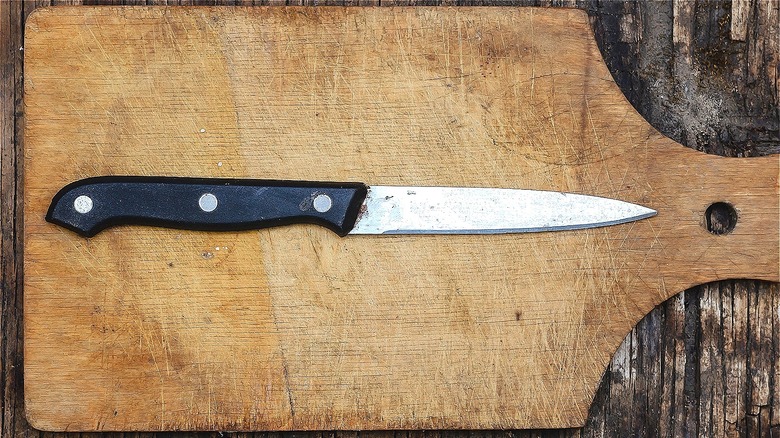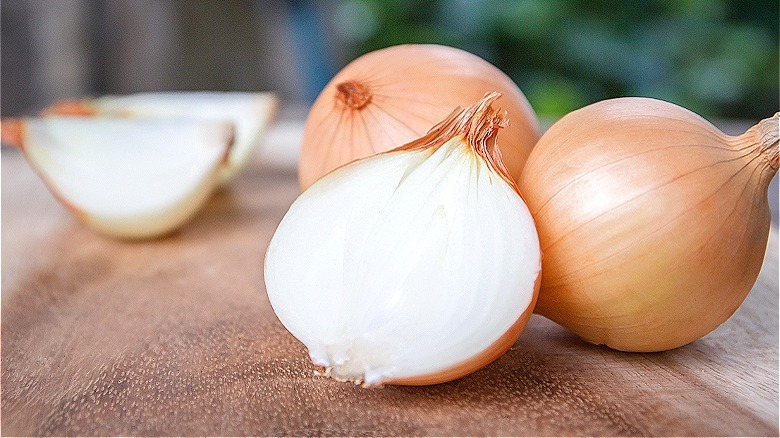The Pungent Vegetable That'll Help Fix Rusty Knives
Mom always said never to wash your kitchen knives in the dishwasher. But you didn't listen and now your once shiny cutlery is peppered with rust spots. What's worse, she's on her way over to your house for dinner and you're fresh out of WD-40. Don't panic. There's no reason to rush out to the store to buy a commercial rust remover when your kitchen is likely housing an effective and much more affordable solution. Simply stroll over to your pantry and pull out the pungent vegetable that quickly fixes rusty knives: a raw onion.
Granted, cooking with a rusty knife isn't going to kill you, but ingesting corrosive bits could give you a stomachache – and then there's the pain of dealing with your displeased mother. Despite her well-intentioned warning, it is not uncommon for rust to appear on knife blades, even ones made of stainless steel. After all, stainless doesn't mean stain-free. Similar to other types of steel, stainless steel is constructed primarily from iron and carbon. When the former is combined with water and air, iron oxide — or rust — forms and dots your knives with unsightly reddish-orange stains. Consequently, it's vital to dry knives immediately and thoroughly after hand washing and rinsing them. This includes the utensil's blade and handle as moisture from any part of the knife can pool or drip into crevices on the metal and cause rust.
How to use an onion to remove rust from knives
Fortunately, you don't have to spend a ton of time and money to restore rusty knives to their original shine. All you need is a common yellow onion. The humble vegetable contains amino acid sulfoxides that form sulfenic acid when exposed to oxygen. When you use a knife to cut into an onion, the blade's stained areas come into contact with the acid. This, consequently, initiates a chemical reaction with the rust's hydrogen ions. Over time, the more sulfenic acid that engages with the rust, the faster the corrosion is broken down and eventually eliminated.
To start, cut the onion lengthwise from root to stem and peel off the papery skin. Once you dispose of the onion's outer layers begin slicing against the grain. Doing so creates additional sulfur compounds which help erase rust spots. Then use the knife's blade to saw back and forth into the onion making sure to completely cover the rusty areas with the onion's juices.
Another option is to simply cut off a small portion of the onion, but keep the skin intact. Place your knife on the cutting board with the blade facing away from you, then use the remaining part of the onion with its exposed flesh and apply gentle pressure as you scrub the rust stains. This method is ideal if you are trying to target isolated areas of corrosion, as it allows you to control the level of sulfenic acid saturation.

